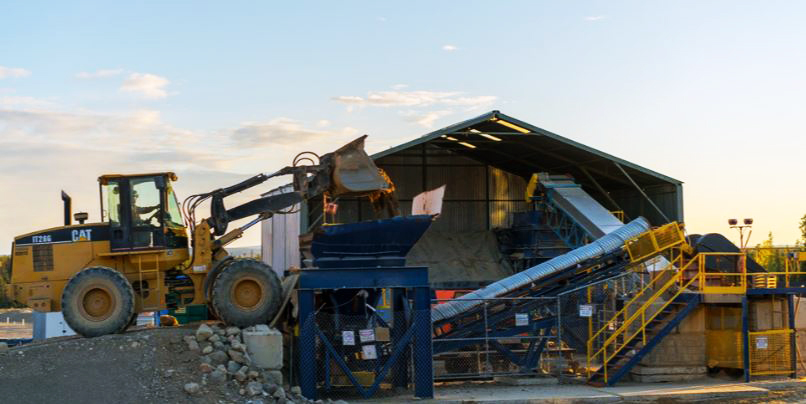Golden Predator restarts first-of-a-kind Yukon gold processor

Golden Predator's processing facility at its 3 Aces gold project in the Yukon. Source: Golden Predator Mining Corp.
Golden Predator Mining Corp. [GPY-TSXV; NTGSF-OTCQX] said Monday May 13 that it has restarted what it called a “first of its kind” processing facility following the winter break at its 100%-owned 3 Aces gold project in the Yukon.
The company said the processing facility, which is being used to test the gold content in rock samples extracted from 3 Acres, is operating 96.2% of the available hours since restart on April 19, 2019. With minimal downtime for maintenance, the processing facility is averaging 49.4 tonnes per day. Results from the processing and contained gold recovered, will be reported following the confirmation of assays.
The 3 Aces property hosts an orogenic gold project and is located northeast of Watson Lake. Golden Predator has so far focused on the 13.5 km2Â Central Core Area, a broad gold-in-soil anomaly, where numerous gold-bearing quartz veins have been discovered.
The company made an early decision to bulk sample at its 3 Aces Project when it realized that much of the gold contained in its veins is high-grade and nuggety. The ‘nugget effect’ occurs when the gold is not distributed evenly throughout the deposit but rather is accumulated in clumps within the veins with visible gold often sitting loosely in open spaces and along fractures. This can skew assay results using normal sampling techniques.
To eliminate the cost of shipping bulk sample materials outside of Yukon, and to effectively manage the processing costs, Golden Predator built its own closed system processing plant
In a February 11, 2019 press release, the company said approximately 6% of the 9,800-tonne bulk sample from the Spades Zone was successfully processed at the company’s own test processing plant during the fourth quarter of 2018.
Two concentrates were produced. The first was poured into a 13,216.5 gram doré bar and shipped to Asahi Refinery in Ontario. It yielded 365 troy ounces of gold (86.28% gold) and 34 troy ounces of silver (7.36% silver), providing a return of US$471,386.
Of the 9,800 tonnes of material that was excavated in 2018 from a series of 2.0-metre benches in the Spades Zone, approximately 20% of the material was transported to the processing facility before the end of 2018. The balance will be transported this year.
It is expected that the plant will process the 2018 bulk sample until the third quarter of 2019 with results and process reports due on a monthly basis. An additional bulk sample of up to the permitted 10,000 tonnes is expected to be outlined and planned during the second quarter of 2019, with actual bulk sampling activities set to start in the third quarter of 2019.
Processing activities associated with the planned 2019 bulk sample will continue into the third quarter of 2020.
The company designed its 2018 bulk sample program to reconcile actual grade against grade predicted by drill results, confirm the pattern of gold distribution, improve metallurgy and begin to understand the rock mechanics. The overall projected grade for the entire bulk sample is estimated at 20 g/t gold.
On Monday, Golden Predator shares jumped 8.11% or $0.015 to 20 cents. The shares trade in a 52-week range of 18.5 cents and 51 cents.
